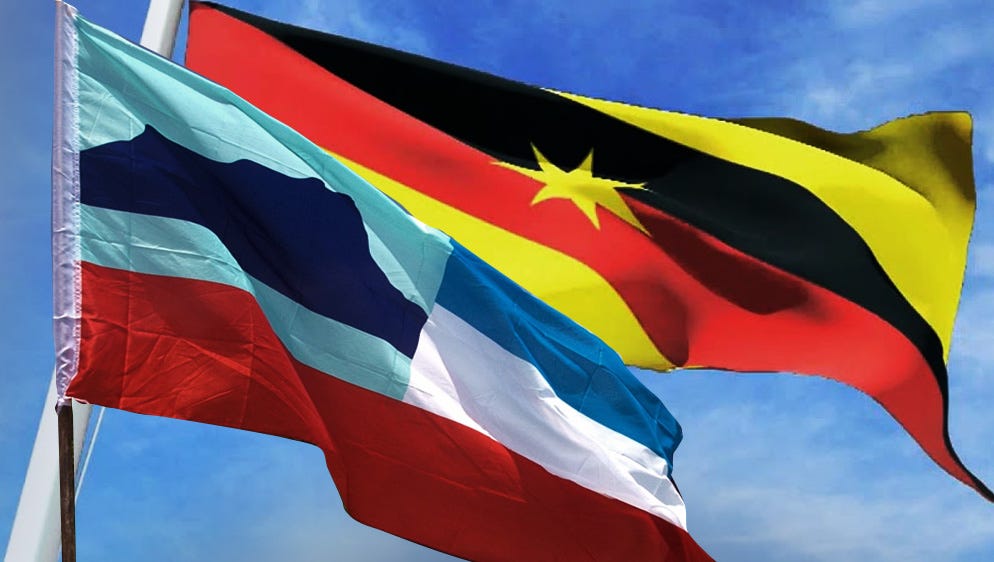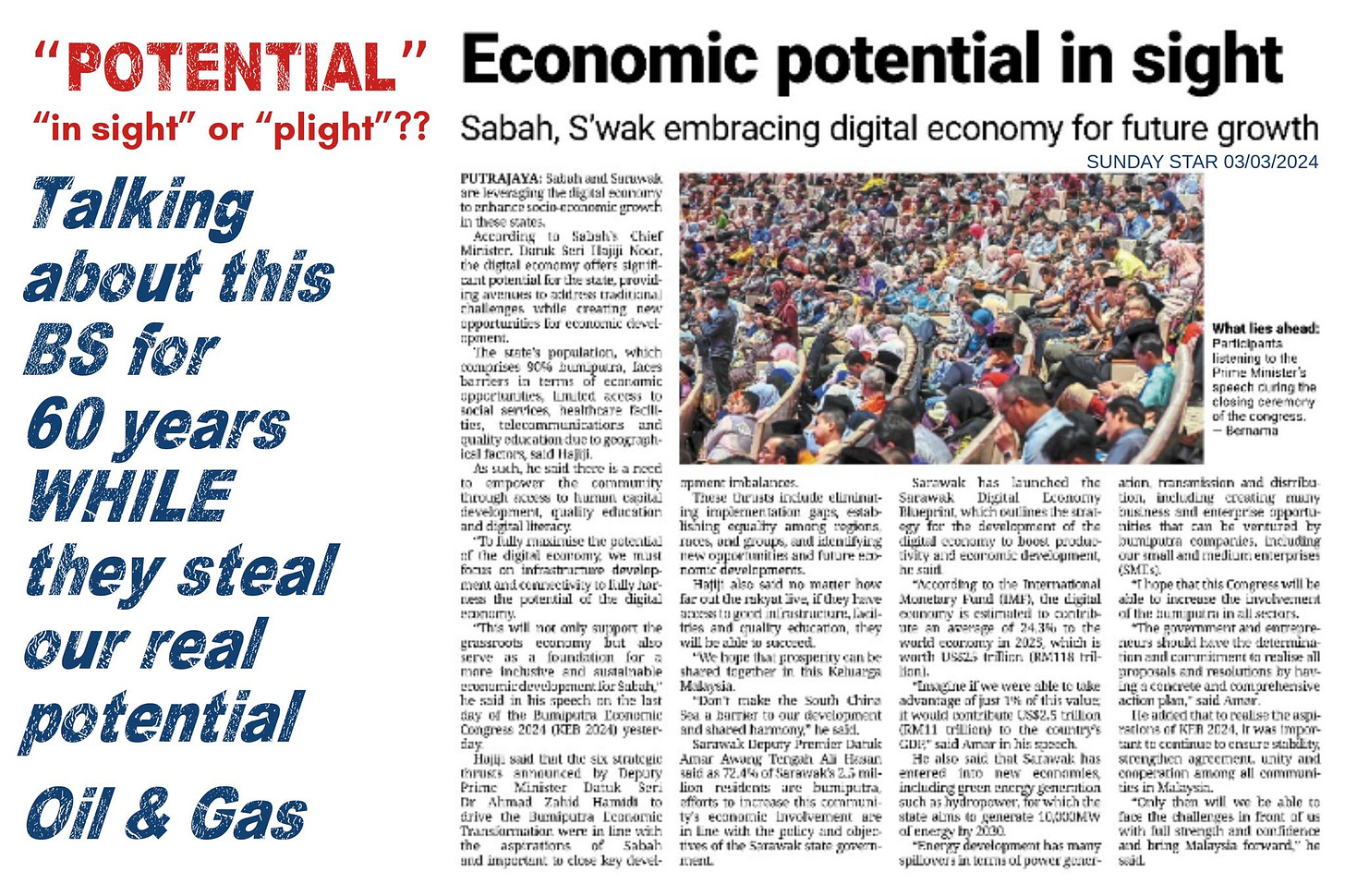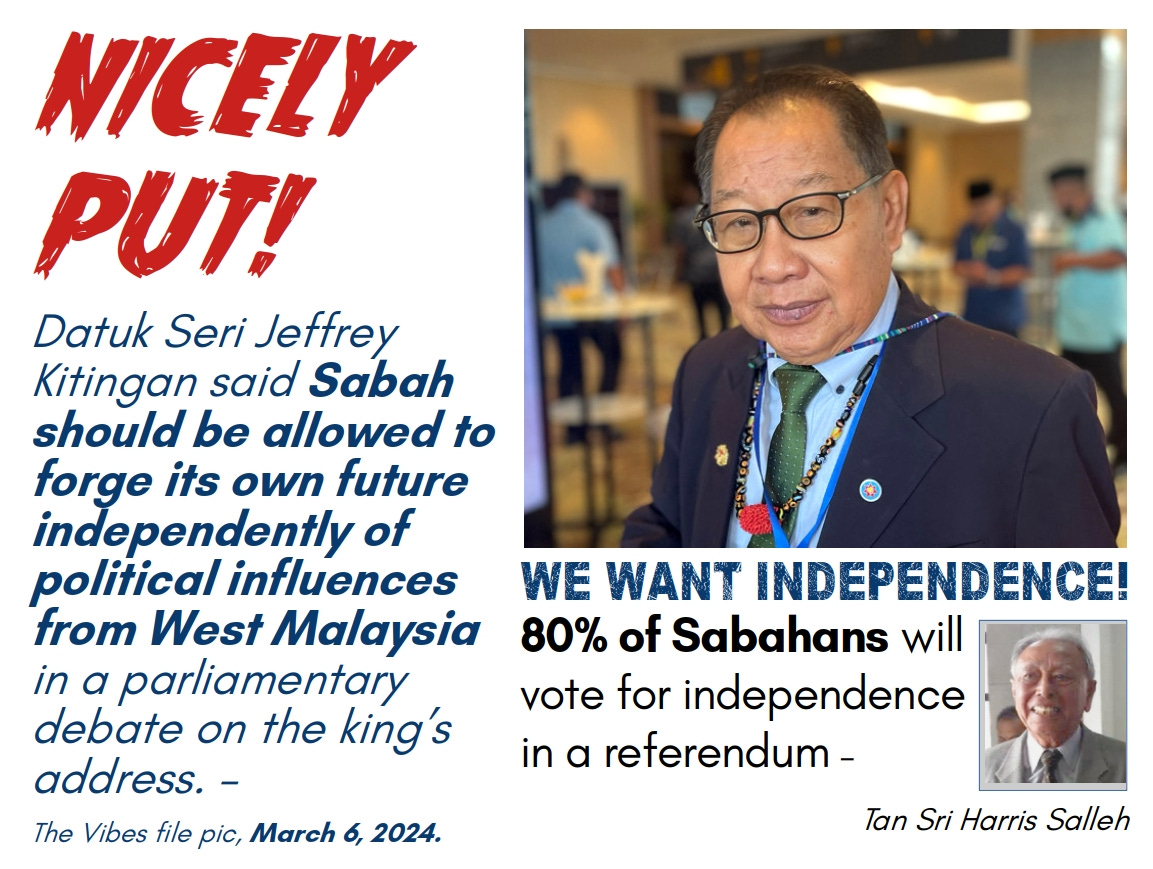
Murray Hunter
The growing momentum for secession in Sabah and Sarawak
Are Sabah and Sarawak colonies of Malaya?
MAY 09, 2024

The small secession movement in Sabah and Sarawak has been getting louder over the past 9 months. This is the case, even with an East Malaysian deputy prime minister in the federal government, and the recent constitutional amendments proclaiming Sabah and Sarawak as regions and not states. The perception of peninsula politics under the leadership of Anwar Ibrahim is giving Sabahans and Sarawakians cause to think about the divisive identity politics, racism, and rise of political Islamization, very different to what East Malaysian Muslims are practising.
There is a major population differential between the peninsula with 27 million people, and Sabah and Sarawak with a little over 6 million people. Many Sabahans regret the over-running of the region with Muslim illegal immigrants from Indonesia and the Philippines under project IC for the purpose of assisting UMNO enter Sabah politics and takeover the state government. This destroyed Kadazan/Dusun dominance of government before the flood of illegals. Such strategies were resisted in Sarawak, which has managed to keep its ethnic balance intact.
Many East Malaysians want much more autonomy and less interference from Putra Jaya. The growth of the small secession movement had traditionally been kept in check by the use of the Internal Security Act (ISA) – now defunct, which allowed detention without trial and the Sedition Act.
The changing political dynamics in federal politics has allowed much more free speech on issues of autonomy and secession in East Malaysia. In Kuching, there are often small demonstrations by the SAREXIT NGO bringing the issue into open public view.
Sabah and Sarawak colonies of Malaya?
Those who claim Malaya took advantage of Sabah and Sarawak, see Malaya acquiring Sabah and Sarawak from the British Empire, rather than a merger of equals. Malaya became the new caretaker of the two former British colonial states. Sarawak politician Voon Lee Shan claimed United Nations records show Malaya acquired Sabah (North Borneo) and Sarawak from Great Britain. Thus, according to Voon “this made Sabah and Sarawak colonies of the Federation of Malaya”.
Voon justifies his view from the “Queen of England’s message to Tunku Abdul Rahman’ on the inauguration of Malaysia on September 18, 1963;
“I have the pleasure in presenting to you this gift from the British Government to the government of Malaysia. This piece of modern silver, especially designed by British craftsmen for the occasion, brings the greetings of the people of Britain.”
Tunku’s reply of acceptance of Britain’s gift to the Commonwealth Secretary on September 19, 1963 was;
“I am grateful for the confidence of Her Majesty’s Government in passing the rights over the territories (Singapore, Sarawak, and Sabah) to us. We shall do everything possible to justify the trust you have placed in us.”
One of the biggest grievances is there was no plebiscite of the people of Sabah and Sarawak agreeing to any merger with Malaya and Singapore at the time. Some are angered by the process of decolonization pursued by Britain that led to the formation of Malaysia. The British wanted an anti-communist government in its former colonies, as it left the Far East. Britain had cultivated the leaders of Sarawak and Sabah (then North Borneo) to agree to joining Malaysia.
Another issue that makes Sarawakians and Sabahans feel like they are colonialized is embedded into the constitution. According to Article 32 and the Third Schedule, only the nine Malay rulers in the peninsula can ever become Malaysia’s head of state. The constitution explicitly excludes the possibility that any person from Sabah or Sarawak could ever become the head of state.
The failure of the federal government to honour the Malaysia Agreement 1963 has left many with mixed feelings. Both Sabah and Sarawak have not been given the high levels of autonomy they were promised. They are disenchanted with the seemingly continuous erosion of power taken by the centralist federal government.
The massive development of the peninsula in contrast to the scant development in East Malaysia is well noticed giving some a feel of being cheated. Sabah has a poverty rate of 19.5 percent, Sarawak is 9 percent, where the national average is 5.6 percent. Sabahan and Sarawakian feel the peninsula has prospered at their expense. This is what makes the 5 percent oil and gas royalty a major issue of contention.

NGOs changing their strategy
There has always been a small group talking about secession. The secessionist movement is made up mostly of professional middleclass people cantered in Kuching and to a lessor extend in Kota Kinabalu. Most of secession sentiment can be seen through social media today.
A group supporting secession, Parti Aspirasi Rakyat Sarawak ran in the last Sarawak state election, but couldn’t raise more than 2,972 votes across half a dozen seats, where each candidate lost their deposit. Inspired by the Catalonia and Scotland movements, the strategy has changed to educating more people about the issues around secession until it becomes a major issue. NGO leaders are now resigned to the idea it may take a generation to educate people about the history of federation with Malaya, and the injustices involved.
There is slowly growing sentiment in Sabah and Sarawak advocating secession from the federation. Politicians in both Sabah and Sarawak are now talking about keeping “Malaya out”.
The Sarawak government has already gone a long way down the path in seeking more autonomy. Gabungan Parti Sarawak (GPS) support of the Anwar government has given Sarawak a lot more leverage to takeover responsibilities from the federal government in areas like education. The strength of Sabah and Sarawak to bargain with Putra Jaya is greatly weakened with little, if any collaboration between politicians of Sabah and Sarawak. Sabah and Sarawak have not been able to present any united front towards Putra Jaya.
The growing political Islamization in the peninsula is creating a reactionary nationalism in both Sabah and Sarawak. Sabah and Sarawak, both ethnically diverse, with high rates of intermarriage, rejects the political Islam that advocates exclusion of the peninsula. Many Sabahans and Sarawakians cherish the idea of a secular state.
Politicians are not under the threat of ISA or charges of sedition they once were. Therefore, more nationalistic talk should be expected in the future. How much of this will be politicians pandering to their constituents, and how much will be sincere will be another matter. One more factor hindering a stronger move towards secession is the self-interests of the political elites in Kota Kinabalu and Kuching. They have their own agendas.

One final dynamic will be the establishment of Nusantara, the new Indonesian national capital in Kalimantan. Nusantara is closer to Sabah and Sarawak than Putra Jaya, and the people of Kalimantan are culturally closer than those in the peninsula. This could also have great influence upon the future political directions of Sabah and Sarawak, and may bring new dimensions.
A major factor is how much autonomy Putra Jaya will allow Sabah and Sarawak in the near future.
Time to leave
ReplyDeleteLet Sabah and Sarawak leave the cavemen stew in their crap